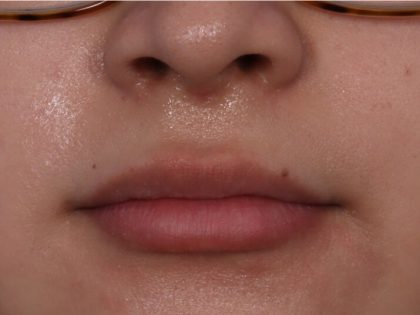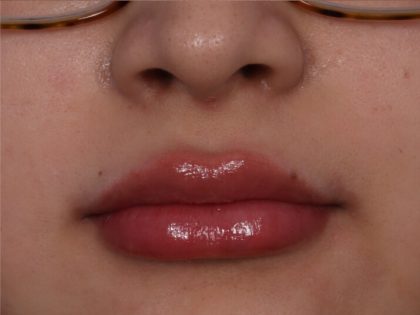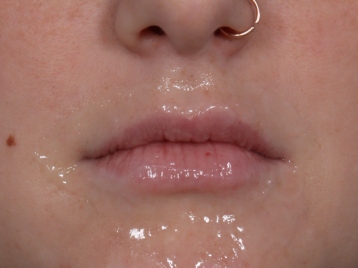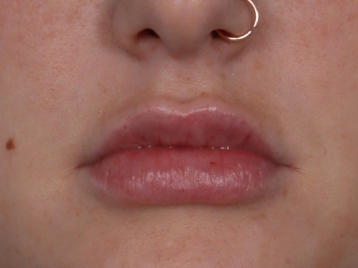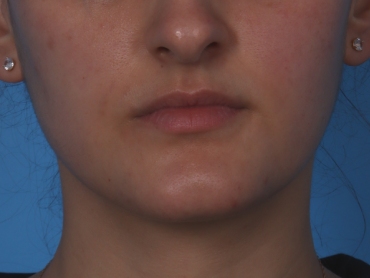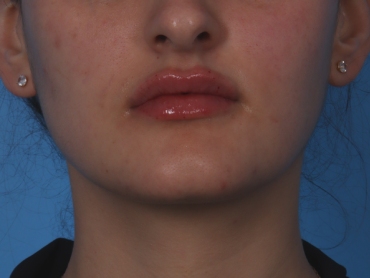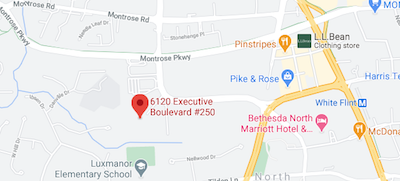A dermal filler is a semi-permanent, non-surgical treatment that replaces lost volume and diminishes the appearance of signs of aging in the face. Hyaluronic acid (HA) fillers like Juvéderm and Restylane, and poly-L-lactic acid (PLLA) fillers like Sculptra are well-known for their ability to transform and improve areas such as the nasolabial folds, under-eye bags, cheeks, jawline, lips, and chin. Understanding the science behind these injectable treatments can provide valuable insight into how dermal fillers work and why they are an effective option for facial rejuvenation.
At Michaels Aesthetic & Reconstructive Plastic Surgery, Dr. Joseph Michaels, a board-certified plastic surgeon, specializes in the artistry of dermal fillers. With his expertise and meticulous approach, he creates natural-looking results that enhance his patients’ unique features. If you are considering dermal fillers for wrinkle reduction, facial rejuvenation, or facial contouring, schedule a consultation at our Rockville, Maryland, or Fairfax, VA office. Contact us at (301) 468-5991 (Rockville) or (703) 957-8610 (Fairfax) or fill out a form to learn more about the transformative possibilities of dermal fillers.
Before and After Photos
Contents
The Story of Dermal Fillers
Our skin changes as we age, leading to wrinkles, volume loss, and other signs of facial aging. Early attempts to address these concerns involved surgical procedures such as facelifts, which focused primarily on tightening loose skin. However, it became evident that addressing the underlying volume loss was equally important in achieving natural-looking results.
First-Generation Fillers
In the 1980s, the first generation of dermal fillers emerged as a non-surgical alternative to traditional anti-aging techniques. These early fillers were derived from animal sources, such as collagen extracted from cows. Although they provided temporary improvement in facial contours, they had limitations in terms of longevity and potential allergic reactions.
The evolution of dermal fillers continued in the 1990s with the introduction of hyaluronic acid (HA) fillers. This breakthrough marked a significant milestone in the field, as HA fillers offered longer-lasting results and a reduced risk of adverse reactions.
Second-Generation Fillers
As technology advanced, so did the development of dermal fillers. The 2000s witnessed the emergence of second-generation fillers, incorporating molecular cross-linking techniques to enhance their durability. These fillers maintained their shape better over time and provided even more natural-looking results.
Third-Generation Fillers
In recent years, dermal filler technology has continued to evolve rapidly. Third-generation fillers now offer an array of options tailored to specific aesthetic needs, including different consistencies and densities. This allows for precise customization and targeted treatment of various facial areas.
How HA Fillers Work
One of the most commonly used types of dermal fillers is hyaluronic acid. Examples of HA fillers include the following.
- Juvéderm (Juvéderm XC, Juvéderm Vollure, Juvéderm Voluma, Juvéderm Volbella, Juvéderm Volux)
- Restylane (Restylane Silk, Restylane Lyft, Restylane Refyne, Restylane Defyne, Restylane Kysse)
Hyaluronic acid is a naturally occurring substance in our bodies that helps maintain moisture and elasticity in the skin. It is the main component of the skin’s scaffold system, known as the Extracellular Matrix (ECM). (1) When injected into specific areas of the face, it acts as a volumizer, filling in wrinkles and lines, and restoring lost volume. Hyaluronic acid fillers are incredibly versatile and can be used to enhance the lips, cheeks, nasolabial folds, and other areas of the face.
HA Crosslinking
With HA crosslinking, the properties of the hyaluronic acid filler are modified by introducing chemical bonds between its molecules. This process enhances the structural integrity and longevity of the filler, resulting in longer-lasting and more durable results. (2)
How Dense is Your Filler?
Density refers to the thickness or concentration of the filler, while viscosity relates to its ability to flow smoothly. (3) The unique combination of density and viscosity determines the specific characteristics of each filler and how it interacts with the tissues beneath the skin.
High-Density, Low Viscosity
Dermal fillers with higher density are often used to address deeper wrinkles and folds, such as nasolabial folds or marionette lines. These thicker fillers provide structural support and help restore volume to areas that have lost elasticity and fullness over time. They can also be used for facial contouring, enhancing features like the cheeks or chin for a more balanced and harmonious appearance.
Low-Density, High Viscosity
On the other hand, fillers with lower density and higher viscosity are typically utilized for areas that require more delicate precision, such as the lips or under-eye hollows. These thinner fillers allow for smoother and more natural-looking results, providing subtle enhancements and rejuvenation without overfilling or distorting the treated area.
How PLLA Fillers Work
Another type of dermal filler is PLLA (poly-L-lactic acid). The most common example in the United States is Sculptra. PLLA works differently than hyaluronic acid fillers, as it stimulates the production of collagen in the skin. Collagen is a protein that gives our skin its structure and firmness. As we age, our collagen levels decrease, leading to sagging and wrinkling of the skin. By stimulating collagen production, PLLA fillers help improve skin texture and restore volume over time. This makes them an excellent choice for patients looking for long-lasting results.
Benefits of Dermal Fillers
- Improved facial volume and contouring: Dermal fillers can restore lost volume in areas such as the cheeks, temples, and lips, providing a more youthful and rejuvenated appearance.
- Reduction of fine lines and wrinkles: By filling in lines and wrinkles, dermal fillers can smooth out the skin’s surface and soften the signs of aging, such as crow’s feet, smile lines, and marionette lines
- Non-surgical alternative to facelifts or other invasive procedures: Dermal fillers offer a non-surgical option for those seeking facial rejuvenation. They provide noticeable results without the need for extensive downtime or recovery.
- Long-lasting effects: While the duration of results may vary depending on the type of filler used, most dermal fillers offer long-lasting effects that can last several months to a year. This means you can enjoy your rejuvenated appearance for an extended period.
- Customizable treatment options: Dr. Michaels will work closely with you to understand your unique goals and tailor the treatment to your specific needs. This ensures personalized results that enhance your natural beauty.
- Natural-looking outcomes: Dermal fillers are carefully injected to maintain facial expressions and create natural-looking results. The goal is to enhance your features subtly and harmoniously.
For more information about fillers and other non-surgical procedures, please visit our blog.
Personal Consultation
At your personal consultation, Dr. Michaels will guide you through the benefits and potential risks associated with dermal fillers, ensuring that you have all the necessary information to make an informed decision. He may also discuss surgical enhancements or combination treatments that can further amplify your overall results.
Our goal at Michaels Aesthetic & Reconstructive Plastic Surgery is to provide you with anti-aging solutions that help you achieve a refreshed and youthful appearance. We understand that each patient is unique, and Dr. Michaels will personalize your treatment plan based on your individual needs and desires.
Corresponding & Complementary Procedures
Botox
Botox is a non-surgical, minimally invasive wrinkle-smoothing treatment that can be performed in our office with minimal downtime. It is typically used to reduce the appearance of horizontal forehead lines, glabellar lines, and crow’s feet. Results typically become noticeable within a few days, with the full effects appearing within two weeks. The duration of the results varies from person to person but generally lasts around three to four months.
Kybella
Kybella is an innovative non-surgical treatment specifically designed to target and eliminate submental fat (under-chin fat). Kybella is an FDA-approved treatment that harnesses the power of deoxycholic acid, a naturally occurring molecule in the body that aids in the breakdown and absorption of dietary fat. When injected into the submental area, Kybella effectively destroys fat cells, leading to a noticeable reduction in the appearance of a double chin.
Facial Fat Transfer
Facial fat transfer involves harvesting excess fat from one part of the body, such as the abdomen or thighs, and carefully injecting it into specific areas of the face that have lost volume or definition. It is a versatile procedure that can be combined with other cosmetic treatments to achieve comprehensive facial rejuvenation. Whether performed as a standalone procedure or in conjunction with facelift surgery, brow lift, or eyelid surgery, fat transfer can enhance and complement the results, providing a more balanced and natural-looking outcome.
Cost of Dermal Fillers in Rockville
The cost of dermal fillers will vary depending on several factors, including the type of filler used, the amount required for your desired results, and your overall treatment plan. Dr. Michaels will work with you to design the most effective plan to envision your goals.
If you are looking for a safe, effective, and natural-looking solution to address facial volume loss and signs of aging, dermal fillers may be the ideal choice for you. You can reach us at (301) 468-5991 (Rockville) or (703) 957-8610 (Fairfax) to book your appointment. For those unable to visit our office, we also offer virtual consultations for your convenience. Simply follow the prompts on our website, and one of our knowledgeable staff members will be in touch.
References
- Walker K, Basehore BM, Goyal A, Zito PM. Hyaluronic Acid. PubMed. Published 2022. https://www.ncbi.nlm.nih.gov/books/NBK482440/#:~:text=Mechanism%20of%20Action
- Wongprasert P, Dreiss CA, Murray G. Evaluating hyaluronic acid dermal fillers: A critique of current characterization methods. Dermatologic Therapy. 2022;35(6). doi:https://doi.org/10.1111/dth.15453
- Gavard Molliard S, Bon Bétemps J, Hadjab B, Topchian D, Micheels P, Salomon D. Key rheological properties of hyaluronic acid fillers: from tissue integration to product degradation. Plastic and Aesthetic Research. 2018;5(5):17. doi:https://doi.org/10.20517/2347-9264.2018.10








